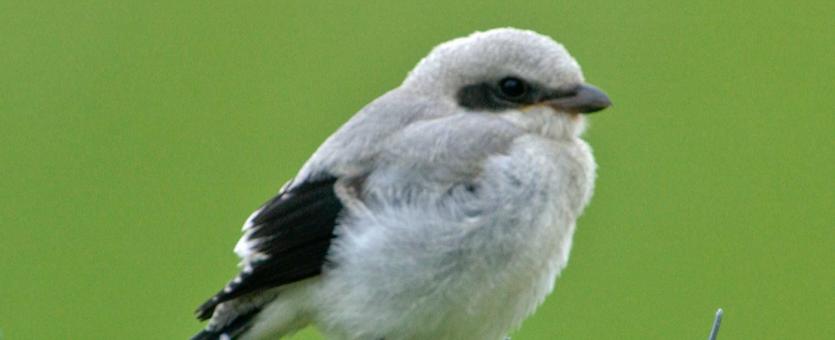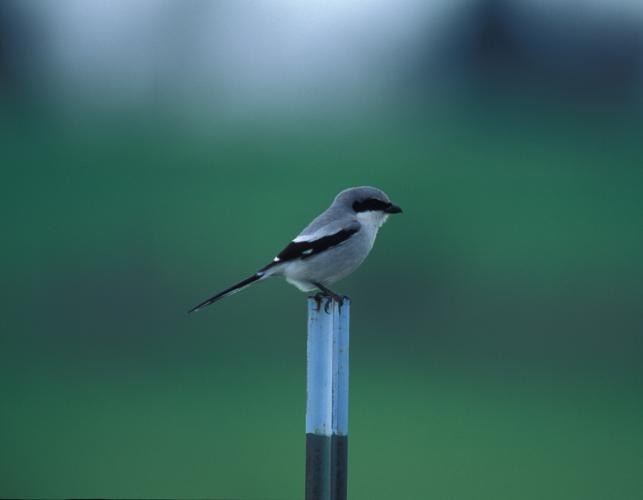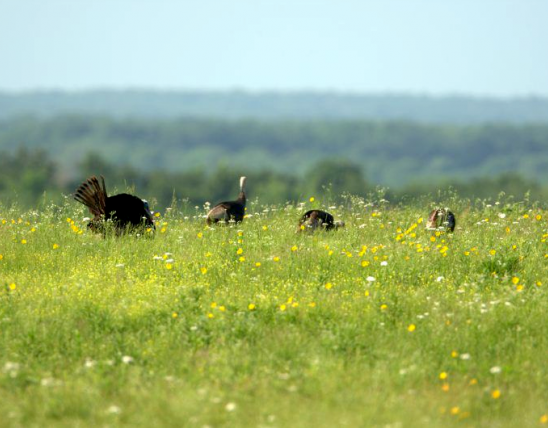
Loggerhead shrike adult upperparts are bluish gray with black wings and tail and a broad black eye-line mask. The bases of the primaries are white and may be visible in flight, though the wings often move too rapidly for you to see distinct patterns. Underparts are pale gray with fine, indistinct gray barring. The bill is short and slightly hooked, and the rump is blue gray like the back. The song is a varied mixture of whistles, warbles, and harsh squeaks. The call is “schack-schack.”
Length: 9 inches (tip of bill to tip of tail).

Statewide.
Habitat and Conservation
Essentially a bird of open country, especially grasslands and overgrown fields with scattered shrubs and trees, from which it hunts for prey. The population of this species is declining rapidly. Biologists believe that pesticides and habitat loss are the major causes of the decline. The Missouri population has fallen an average of 6.7 percent each year from 1967 through 1989. The range has been extensively reduced. Populations seem secure globally, but the species is imperiled in our state.
Food
A songbird “bird of prey,” the loggerhead shrike feeds on mice, large insects, frogs, and even small birds, swooping down on them from a high perch. They often impale their small prey items on thorns or barbed wire fences, a curious behavior that gave them the common name “butcher bird.” Because they are perching birds and not raptors, shrikes lack the talons to help stabilize their dinner.
Status
Uncommon permanent resident. In Missouri, listed as a species of conservation concern due to its rapidly declining populations.
Life Cycle
Loggerhead shrikes usually establish territories by late March and often have two or even three broods per year.
Human Connections
This is one of only two shrikes that live in North America, and it’s the only one found only on our continent. That it is the only shrike exclusive to North America makes it quite special—but its habit of impaling its meat on thorns makes it even more unique.
Ecosystem Connections
This small predator is to big bugs, little birds, and mice what larger hawks and owls are to larger prey. Each predator species has its own range of prey species that it helps to keep in check.






Where to See Species
About 350 species of birds are likely to be seen in Missouri, though nearly 400 have been recorded within our borders. Most people know a bird when they see one — it has feathers, wings, and a bill. Birds are warm-blooded, and most species can fly. Many migrate hundreds or thousands of miles. Birds lay hard-shelled eggs (often in a nest), and the parents care for the young. Many communicate with songs and calls.






















